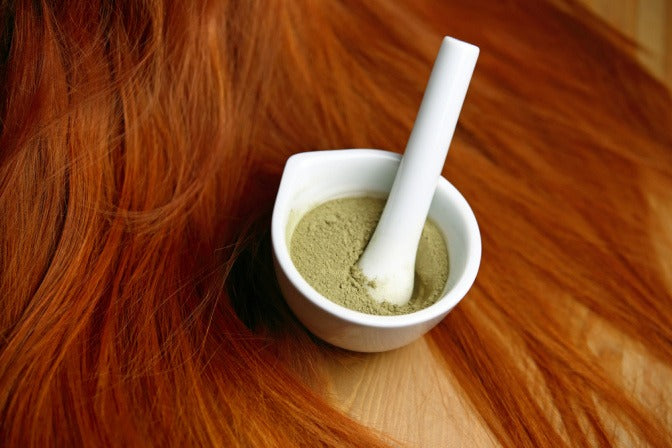
Herbal Hair Dye
Herbal hair dyes are a natural and fascinating alternative to traditional chemical dyes. Not only do they offer a wide range of colors, but they also boast beneficial properties for the scalp and hair structure.
The Magical World of Dyeing Herbs
Herbal dyes have been used for thousands of years to color hair naturally and without damage. Among the most popular are henna, indigo, cassia, and amla. These plants not only dye hair but also strengthen and nourish it from within.
Henna
Henna is probably the most famous of the dyeing herbs. Derived from the leaves of the Lawsonia inermis plant, it is known for giving hair beautiful shades ranging from red to deep brown. Rich in tannins, henna creates a protective layer around the hair, improving its resistance and shine.
Indigo
Indigo, extracted from the Indigofera tinctoria plant, is often used in combination with henna to obtain darker shades, even black. This is because indigo has very powerful dyeing properties that, combined with henna, can create a wide range of natural colors.
Cassia
Cassia, obtained from the Cassia obovata plant, is perfect for those who want to lighten their hair without changing their natural color too much. It does not color dark hair, but gives a golden hue to light hair. Cassia is also known for its conditioning properties, leaving hair soft and shiny.
Amla
Amla, or Indian gooseberry, is used primarily for its strengthening properties. Although it does not have strong dyeing properties, it is often mixed with other herbs to improve overall hair health and stimulate growth.
The Benefits of Dyeing Herbs
Natural and Safe: Unlike chemical dyes, herbal dyes are free from harmful substances such as ammonia and peroxides.
Benefits for Hair: In addition to dyeing, these herbs nourish and strengthen hair, improving its overall health.
Versatile: They can be used individually or mixed to obtain a wide range of natural colours.
Eco-friendly: Herbal dyes are biodegradable and environmentally friendly, a great choice for those who want to reduce their environmental impact.
How to Apply Herbal Dye
Preparing and applying dye herbs requires some patience, but the results are worth it. Here is a general method for using henna:
Preparation: Mix henna powder with hot water until you get a thick paste. Let the mixture sit for a few hours.
Application: Apply the paste to clean, dry hair, distributing it evenly from root to tip.
Processing Time: Leave the henna on for at least 2-3 hours. For more intense shades, you can extend the processing time.
Rinse: Rinse hair thoroughly with warm water until the water runs clear. Avoid shampooing for the first 48 hours to allow the color to set properly.
Conclusion
Herbal hair dyes are a return to nature and tradition, offering a healthy and eco-friendly solution for those who want to change their hair color without compromising their health. Whether it’s henna, indigo, cassia, or amla, these botanical wonders allow you to express your personality and style naturally.
What do you think? Do you prefer to experiment with natural colors ? Discover Le Erbe di Janas , a 100% Italian brand that guarantees quality.


